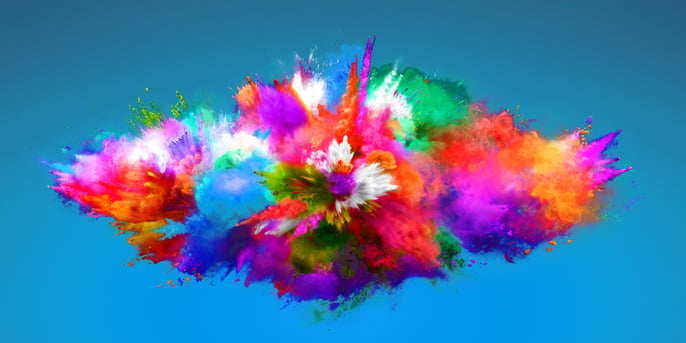How colors can build trust
Last updated: April 5, 2023Colors control emotions
Our eyes are highly sensitive sensory organs that perceive a wide variety of colors and shades in a differentiated way. At the same time, different colors, shades and color combinations influence the individual emotional world. Whether someone is green with envy or red with anger, in the end these expressions show: Colors enhance moods and emotions. They directly or indirectly convey various effects: yellow-red shades convey a pleasant warmth, while dark red colors draw attention to particular dangers. Bright colors in hospitals demonstrate cleanliness and hygiene. Studies have shown that hospital patients who looked at a green forest wallpaper recovered faster than patients with only white walls. Apart from this, in digital worlds, neon colors in online stores can draw attention to special discounts or promotions. Color perception is generally influenced by cultural, historical, regional and professional factors. While black coats are standard for business bankers, colorful outfits are the order of the day in the creative scene. In short, everyone directs the viewer's gaze with their choice of color - to control concrete rational and emotional goals.
Color choice: Adapted to the target group
Which colors are used influences the viewers' gaze and thus also the effects on the target group. While striking, bright colors fascinate a younger target group, grey or beige are suitable for slightly older target groups. Several studies have shown: The older the target group, the more pastel colors are preferred. Apart from age, there are also differences between the sexes: Coca-Cola Zero or DAZN radiate something with their dark, strong colors that is supposed to attract more male consumers. Light color combinations with red, pink and light grey, e.g. Bebe or Coca-Cola Light, are more aimed at female consumers. Furthermore, colors influence the price perception of the target group: If a product is to be perceived as super cheap, orange or red are super. For products or services positioned at a high price, black, silver, blue or a combination of these is more advisable.
Colors can AIDA
Keyword brand positioning: The AIDA model (Attention, Interest, Desire, Action) is successfully used in marketing worldwide. Colors play an important role here. Especially the A of AIDA, i.e. the generation of attention, can be impressively controlled with the appropriate color selection. For a successful application, a competitor analysis is advisable: Which company colors does the competition use? Which color design does the largest competitor use for the company homepage? And which colors are generally used in marketing activities? Often such an analysis reveals that by no means all possible colors or color combinations are used by competitors. This is the chance for an individual brand positioning that works intensively with its own color choice. An example: The color green stands for nature, environment and environmental protection and in this sense is also used by many companies as a color for environmentally friendly technologies. However, Mercedes deliberately chooses the term Blue Efficiency for consumption-optimised, environmentally friendly engine technology, thereby attracting impressive attention, because suddenly blue also stands for environmental protection.
A change of color is not enough for you? Would you like to become an expert in trust?

